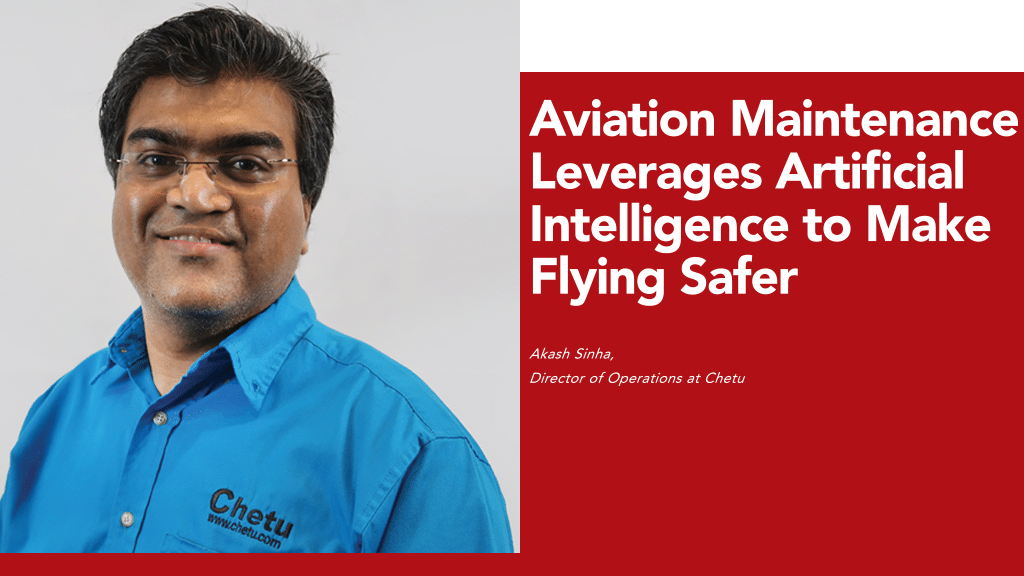The aviation industry, especially aircraft maintenance, has come a long way since Orville and Wilbur Wright’s historic 1903 flight in a plane made from wood and fabric.
Just nine years after the Wright brothers’ flight at Kitty Hawk, North Carolina, the Sperry Corporation developed a gyroscopic autopilot. When computers became small enough in the late 1950s, aircraft companies started installing them. In the 1980s, the Airbus A320 became the first plane to fly with an all-digital fly-by-wire control system.
Not surprisingly, aircraft maintenance evolved along with the airplanes. In the early days, maintenance focused on repairing airplane parts with basic tools, but in the 1960s-80s, the airline industry developed the predictive maintenance system, which used built-in test equipment (BITE) for on-board diagnostics and fault detection and information from flight data recorders (FDRs) to determine scheduled maintenance.
During the 1990s-2000s, airlines started using computerized maintenance management systems (CMMS), which managed resources, schedules and tracked work orders. The airline industry also turned to robots and sensors for automated inspections, as well as the first maintenance forecasting tools.
During the last two decades, software developers have created Artificial Intelligence-powered platforms that have revolutionized aviation maintenance. AI maintenance systems now touch on almost every aspect of aviation maintenance:
• MRO Predictive Maintenance Programs use aircraft performance data from a variety of sources, such as sensors, FDRs, flight logs and maintenance records, to predict maintenance needs before problems occur. AI-driven MRO predictive maintenance solutions help reduce downtime, save money, and, most importantly, improve safety.
• Automated Inspections use AI-powered vision systems to automate the inspection of engines, airframes and wings. These advanced systems can identify defects, cracks, corrosion, and other issues faster and more accurately than human workers, which allows maintenance crews to make timely repairs and minimize the risk of in-flight failures.
• Maintenance Optimization Programs can automate maintenance scheduling and maximize resource allocation, reducing downtime and increasing efficiency.
• Virtual Assistants, or AI-powered chatbots, use Natural Language Processing algorithms, which can provide technicians with instant answers to maintenance questions. AI systems scan and analyze technical manuals to provide relevant information to repair technicians.
• Improved Decision-Making occurs because aviation maintenance crews can receive real-time information and recommendations from AI programs, enabling them to make more informed decisions on how to maintain the aircraft.
• Supply Chain Management Programs optimize the supply chain for aircraft parts and components, reducing the risk of delays caused by parts shortages that could negatively impact aircraft safety and operational schedules.
• Augmented Reality and Virtual Reality platforms can give technicians an immersive training experience in lifelike simulations where they may brush up on their skills or learn the newest maintenance protocols without working on an actual aircraft. Technicians can access pertinent information, such as equipment specs, directly within their range of vision thanks to the AR smart glasses. The ability to see and work with digital models superimposed on real equipment will be invaluable to technicians. With VR headgear, seasoned maintenance workers and students can do repairs on a virtual aircraft and flight deck.
As you can see, AI-powered platforms are the next-generation solution for aviation maintenance. Here are some real-life examples of how aviation companies are using AI to improve maintenance and safety:
• Airbus uses a cloud-based data storing system, which collects and records vast amounts of real-time data of in-flight events that can be used to improve the reliability of aircraft maintenance.
• Rolls-Royce has developed an automated AI inspection system that can cut the time it takes to inspect an aircraft engine by 75 percent with an ROI in the millions over five years.
• United Airlines schedules maintenance more effectively and cuts downtime by using artificial intelligence (AI) to forecast when aircraft parts are likely to break.
Although the aviation industry has already used AI programs, 2023 is the beginning of the AI aviation maintenance age.
ZipDo, in a 2020 presentation, reported that 70 percent of airlines have tried or are using AI in multiple areas, and by the end of 2023, 88 percent of airline investment budgets will go to technology. Straits Research projects a 46.97 percent CAGR from 2023-2031 for global artificial intelligence in the aviation market.
The times are certainly changing.
If Orville and Wilbur Wright were standing in an airplane hangar housing a jumbo jet watching maintenance crews at work, their jaws would drop to the proverbial floor. The aviation industry has changed ten thousandfold since the historic 12-second flight in a wood and fabric airplane more than a century ago.
In the next 100 years, aviation maintenance technology may lead the way to safer air flights that technicians today would
not recognize.
Akash Sinha, Director of Operations at Chetu, a global software solutions and support services provider, oversees development projects in aviation, transportation, weather, environment, and maritime verticals.
